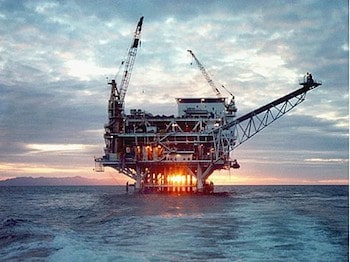In August of last year, 21.6 million acres of the Gulf of Mexico were auctioned off to the dirty energy industry so that they could expand their offshore fracking activities in an area that was still reeling from the effects of the 2010 Deepwater Horizon oil spill.
As DeSmog’s Steve Horn reported at that time, many of the leases sold by the government in August were located in the Lower Tertiary Basin, an area defined by hard-to-penetrate rock where the crude is located in deep water, making the practice of hydraulic fracturing exceptionally risky and prone to environmental disaster.
It wasn’t until the lease sale that the media — and the American public — became painfully aware of the fact that we know so little about what the industry is actually doing in the Gulf of Mexico. It was this lack of knowledge that led the Center for Biological Diversity to file a lawsuit against the government to compel them to release that info.
This past week, that lawsuit was settled in Washington, and now the government will have to reveal the extent of fracking activities in the Gulf of Mexico.
From a CBD press release announcing the settlement:
“Offshore fracking has been shrouded in secrecy, but this settlement will finally force the government to tell us where oil companies are using this toxic technique,” said Kristen Monsell, a Center attorney. “Fracking pollution is a huge threat to marine animals, and the high pressures used to frack offshore wells increase the risk of another devastating oil spill. This inherently dangerous activity just doesn’t belong in the Gulf of Mexico.”
So far, we know that at least 115 offshore fracking wells are currently in operation in the Gulf, but the settlement will force the government to disclose the number of operations, the companies that have obtained leases, and the extent of chemical dumping from fracking activities.
The industry is currently allowed to dump fracking wastewater that is laced with fracking chemicals directly into the fragile Gulf ecosystem, and the lawsuit will unfortunately not be changing that practice. But what will change is that the public will learn who is dumping and where they are dumping, which could easily open companies up to liability lawsuits if they cause harm to the environment or to Gulf Coast residents. In short, the lawsuit brings us some much-needed liability and accountability.
Again, the Gulf of Mexico’s ecosystem is still a shambles as a result of BP’s 2010 oil spill, and the increase in fracking operations in the Gulf, and the subsequent dumping of chemicals into the waters, is only going to make things worse. And fracking operations are only expected to increase, as Mike Ludwig from Truthout points out:
Industry officials have also said they plan to increase the use of fracking techniques to exploit wells in deep Gulf waters, and with more than 4,000 platforms in the region, the Center claims that the scope offshore fracking could be “staggering.”
Without meaningful change, the Gulf of Mexico is set to become a wasteland due to the actions of the dirty energy industry. Policy changes from the highest level are the only way to help restore the Gulf, but as long as campaign money continues to flow, it is becoming increasingly unlikely that we’ll see a ban on offshore fracking in the near future.
Subscribe to our newsletter
Stay up to date with DeSmog news and alerts






